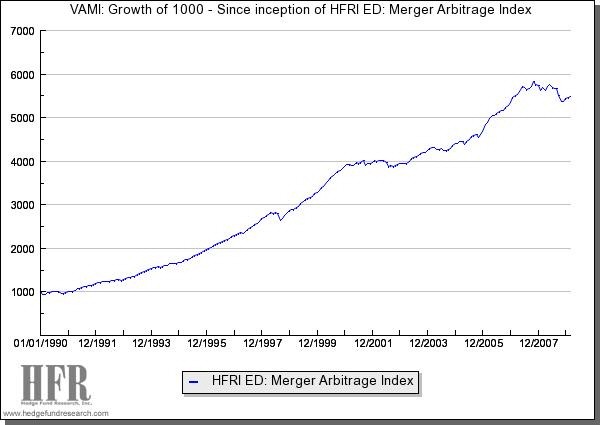Merger Arbitrage For Dummies
Post on: 6 Июнь, 2015 No Comment

Merger arbitrage is a strategy largely targeted at blue chip companies in the UK and around the world, which focuses on price discrepancies that open up during mergers and acquisitions (M&A) battles. Sometimes called risk arbitrage. it involves investment in event-driven situations such as leveraged buyouts, mergers and hostile takeovers. Merger arbitrage is based on the fact that share-price movements during a takeover tend to follow patterns.
The key insight with this strategy is that the price of the target usually rises, and the price of the acquirer usually falls, when a bid is announced (or even rumoured or otherwise anticipated).
Because some degree of uncertainty usually applies as to whether an announced transaction ultimately happens regulatory and financing hurdles, as well as shareholder approval, are among the potential obstacles to closing a deal takeover targets often trade at a discount to the announced target price.
A typical approach may be to buy the target and short the acquirer, and profit from the price movements if the bid succeeds or the price is raised. An arbitrageur who expects the bid to fail would, similarly, short the target and buy the acquirer. Therefore, merger arbitrage is a market-neutral strategy (like pairs trading).
Observe the process in practice
Canada has lots of large, strategic oil companies that are frequently the target of international buyers. In July 2012, local oil and gas company Nexen became the target of a takeover bid from China National Offshore Oil Corp (CNOOC) for $27.50 per share. On the day of the offer the share price soared by 50 per cent to $26.
In the days and weeks following the announcement, you may have expected the share price to rise to a tad under $27.50 but in fact it declined in value to $25.60, 6.9 per cent below the agreed price by mid-October before falling again to under $24 per share by the end of the month.
This price differential tells you that in the weeks after the deal was announced the market was unsure about the deal going through: among other things, the Canadian government flagged it for review under the Investment Canada Act.
In such a situation, many hedge funds would be looking for the details of the offer, focusing in particular on the mix of shares and cash being offered. In an all-cash situation such as CNOOCs proposed acquisition of Nexen, the stock of the target company would be bought by the arbitrageur, whereas in the case of a largely stock-based offer the shares of the acquiring company are also sold short.
Your greatest opportunities are going to come from takeovers and not mergers, because the price movements are greater, and youre likely to make your biggest profits when the terms of the deal have to be improved.
Hedge-fund managers look for circumstances where the acquiring company offers to buy for cash or exchange for its own stock all the outstanding shares of the target company and also where the acquirer doesnt already own substantially all the targets shares.
Also, most merger-arbitrage funds hedge against market risk by purchasing S&P (Standard & Poors) put options or put option spreads.
A put option spread is a strategy, based on the expectation that the underlying asset will drop in price, in which the investor buys put options at one strike price while selling the same number of options at a lower strike price. If the price drops as anticipated, the investors profit is the difference between the two strike prices.
Managers may also employ the use of share options as a low-risk alternative to the outright purchase or the sale of common stock.
Consider the risks of merger arbitrage
Here are a few issues to watch out for with merger arbitrage:
M&A deals dont always succeed. If one falls through you can end up losing money unless youre adequately hedged.
The scope for arbitrage depends on the level of M&A activity. This activity can vary enormously and merger arbitrage is also affected by how efficiently the market reacts to that activity.
M&A activity is hugely impacted by regulatory issues, which can negatively impact takeover breakages (when a deal falls apart). Breakage rates vary enormously, with high levels back in 2006 when liquidity was high and companies were conducting mergers for financial rather than strategic reasons.
Some very useful US-based websites look closely at M&A activity, highlighting potential opportunities. You can cake a look at one of the best at the SINLetter.com .
- Add a Comment Print Share














